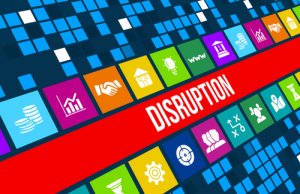 Change is a good thing in the long run, but change can really suck while you’re experiencing it. Right now, six (6) macro phenomena are changing the practice of Information Technology. These changes provide both opportunities for new solutions to enter the marketplace, but also threaten the status quo – and the leaders therein. Whether you are responsible for the success of new technologies that offer revolutionary new capabilities or are tasked with positioning your existing technology in an evolving technology landscape, these six (6) macro changes are ones that every marketer should understand today. Those six are:
Change is a good thing in the long run, but change can really suck while you’re experiencing it. Right now, six (6) macro phenomena are changing the practice of Information Technology. These changes provide both opportunities for new solutions to enter the marketplace, but also threaten the status quo – and the leaders therein. Whether you are responsible for the success of new technologies that offer revolutionary new capabilities or are tasked with positioning your existing technology in an evolving technology landscape, these six (6) macro changes are ones that every marketer should understand today. Those six are:
- Bi-Modal IT
- Device Change
- Smarter Software
- Cloud
- Asia
- Business
#1 Macro Disruptor: Bi-Modal IT
What is Bi-Modal IT? – Bi Modal IT occurs when a company’s IT team is supporting traditional client / server application development and deployment (mode 1) while simultaneously embracing newer, faster approaches to application development and deployment like agile and DevOps and A/B testing on production applications.
What are the impacts of Bi-Modal IT?
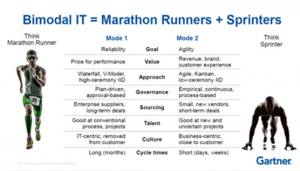
Bi-Modal’s impact on IT is two-fold. Mode 1 IT is what IT teams have been perfecting since Windows NT arrived on the scene – managing for high availability, uptime, reliability and compliance. Mode 1 IT, however, is seen as inflexible, regimented and sometimes out of alignment with changing business needs. The apex of Mode 1 thinking is ITIL (Information Technology Infrastructure Library) which sought to document and codify absolutely every IT process to such a degree that any person, stumbling upon the ITIL documentation could recreate the process from scratch. This works great unless you want to do something that’s never been done before. There’s a word for that – it’s called innovation – and it’s something that IT’s business counterparts really gravitate toward. Innovation under mode 1 has a long planning horizon, a long delivery cycle, a long refresh cycle and represents much of what frustrates business users (especially those that went around IT and started using SaaS and personal mobile devices outside of the purview of IT who would have surely shut them down) when dealing with IT. Mode 1’s infrastructure is designed for long, uninterrupted processing – with relatively few, well-documented and well-tested changes to production applications.
Mode 2 upsets the status quo of Mode 1 (extra credit to the marketer that can come up with names better than Mode 1 and Mode 2 for these IT organizational styles) by introducing the concepts of agile development – breaking large development projects into smaller, bite-sized pieces that can be delivered into production rapidly. This rapid change dynamic – publishing application upgrades and modifications continuously, is not what the mode 1 data center infrastructure nor processes were designed for. Mode 2 breaks Mode 1 infrastructures and processes because it demands rapid changes to product applications and flexibility.
Areas that suffer when Mode 2 enters the organization;
Gartner suggests that a high percentage of CIOs are not going to be able to adjust processes and infrastructure to accommodate mode 2 style IT need for agility. There will be culture clashes when mode 2 teams meet mode 1 infrastructure constraints. Indeed, much of the early adoption of ‘rogue’ infrastructure as a service (IaaS) was mode 2’s solution to being saddled with mode 1, inflexible or unavailable infrastructure.
For IT vendors, Bi-Modal IT is an opportunity. For cloud providers and on-premise cloud management software vendors, Bi-Modal IT is an entry point of sale. Organizations that are wrestling with Bi-Modal IT have a need to change their infrastructures to deliver more flexibility and agility to their customers. Cloud is an obvious, but difficult way to address the changing requirements. Indeed for 2015, we’ve seen an uptick in Platform as a Service (PaaS) adoption – a type of cloud computing that enables agile development and DevOps methodologies for the commercial development team.
Advice for Marketing
Stay relevant. If you’re mode 1, go Bi-Modal. Discuss and present your product in the context of an agile infrastructure and how you’re able to exist in that environment. Understand that organizations on the journey to Bi-Modal IT are going to be re-evaluating their infrastructures. You, as the incumbent, want to be a part of that discussion. The key words for organizations that are embracing Mode 2 IT are DevOps, Agile, Flexible, ssrScrum and cloud (on or off premise). Use these keywords to attract the attention of Mode 2 buyers.
If you’re mode 2, showing how (not telling) your product or service fits into and addresses compliance concerns may open up opportunities – especially at firms with more than 500 employees that are very often subject to compliance obligation.
#2 Macro Disruptor: Device Change
We are talking about the shift from fixed PCs to pervasive, wireless mobile computing using laptops, mobile phones, tablets, and wearables. The evidence of this change is everywhere. In our current IT Priorities survey, we found that organizations are as likely to have a mobile device management (MDM or EMM) project for 2015 as they were to have a windows desktop migration planned – to any version of windows 7, 8, or 10! So, it’s safe to conclude that mobile devices have arrived and are mainstream to corporate IT.
In this case, it is TechTarget who has done the changing, and here is what we’ve done:
Relaunched searchmobilecomputing.com to provide the latest news, analysis and how-to information about enterprise mobility management, mobile operating systems and application delivery. SearchMobileComputing.com also expands its coverage into backend infrastructure and application development — increasingly important markets as mobility entrenches itself in the enterprise.
Advice to Marketing
“Consumerization” as a concept is dead and BYOD is no longer exceptional, but mainstream, so if your messaging platform is built upon these, you may want to re-think your strategy. Think of both of these passed areas as ‘harbingers of change’ rather than actual change. Organizations are now focusing on delivering applications to these platforms and integrating mobility into workflows to provide greater efficiencies.
#3 Macro Disruptor: Smarter Software
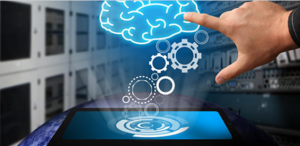 Times were that software ran atop hardware, and they were managed separately. Today, software is getting smarter along two axes. The first axis, smarter applications, can manage the hardware and software upon which they run. In the case of Hadoop, the software is able to configure itself to manage clustering and failure recovery – two tasks that were the exclusive domain of hardware operations and performance management teams. The second, and more dramatic axis is software defined hardware – like software defined networking (SDN) and software designed storage (SDS) – logical extensions of server virtualization that promise:
Times were that software ran atop hardware, and they were managed separately. Today, software is getting smarter along two axes. The first axis, smarter applications, can manage the hardware and software upon which they run. In the case of Hadoop, the software is able to configure itself to manage clustering and failure recovery – two tasks that were the exclusive domain of hardware operations and performance management teams. The second, and more dramatic axis is software defined hardware – like software defined networking (SDN) and software designed storage (SDS) – logical extensions of server virtualization that promise:
- Greater efficiency and flexibility in infrastructure architecture
- Ability to respond rapidly and automatically to changes in service demand
One other effect of software defined infrastructure is a diminishment in the importance of features and capabilities as a means of differentiating hardware products. In a nutshell, smarter software allows for dumber, more commoditized hardware.
Advice to Marketing
Right now, 16% of the TechTarget audience has firm plans for software defined networking and 13% for software defined storage. That means that these markets are not yet mainstream, but that they are set to “cross the chasm” in the next 12 to 18 months. What this means for marketers is that when talking about software defined infrastructures, the vast majority of those conversations are going to be introductory / awareness focused. Your content model should reflect that.
#4 Macro Disruptor: Cloud Computing – Compute Resources Available Over the Internet On-Demand and At Scale
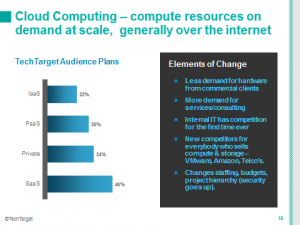
Few topics have lived up to the hype quite so well as cloud computing. You are living through this one.
Cloud computing changes the way that applications are written, tested, and deployed. The net effect is to dampen demand for privately owned compute infrastructure, increase the demand for services related to implementation, and to introduce competition to a previously cloistered IT team. Now they are fighting for resources against external options.
Software as a Service is now the most popular way to acquire and deploy new technology – displacing on premise installations for the first time in 2015.
#5 Macro Disruptor: Asia
When it comes to embrace of new technology, the appetite in Asia is stronger than what we see in other regions of the world. There are 10 topics that Asia is much more likely to be investing in than the rest of the world. These include:
 Platform as a service (cloud)
Platform as a service (cloud)- Cloud application development
- Integrate cellular and wireless LAN
- Implement a bring your own device program for smartphones or tablets
- Mobile applications
- Network management and monitoring
- Internet of things
- Cloud backup
- Software-defined networking
- Big data
You can see that some of the most important strategic initiatives are much more likely to be happening in Asia right now than elsewhere in the world. If you consider your technology ‘cutting edge’ or if it is a ‘first purchase in a new category’ (new capabilities, not a replacement for old technology) as many on this list are – consider investing heavily in the Asian marketplace as your results will likely pay off earlier than they would with a North American or EMEA based approach.
#6 Macro Disruptor: Business
 Business is not new, but the sentiment that business is more involved in IT is new. Is this valid?
Business is not new, but the sentiment that business is more involved in IT is new. Is this valid?
Here is what is true:
Business buyers can promote change / go around when IT is resistant. We saw this in the early days of SaaS cloud computing and mobility in the form of BYOD. Business professionals are most involved in IT decisions that are:
- The first purchase in a category
- Technology they use directly – end user facing applications.
- SaaS for a business function (marketing & sales, mostly) that doesn’t need to integrate into the existing infrastructure
- In organizations that have lower concerns regarding compliance
Business people are almost always at the forefront of new technology. One measure of the technology hype cycle is whether business people are talking about it…. If they’re talking about it, it’s still in hype. This phenomenon has been well documented by Gartner and others. The true utility and value of a new technology is after the business people have gone through the trough of disillusionment and technical teams are implementing and extracting business value from the technology.
The takeaway here is that you will get early hits and interest in new technology from business people. To turn those early hits into purchase reality and long term customer retention – an essential metric for the SaaS licensing model – you must also market to, sell to and service the IT team that is actually responsible for the successful implementation, integration, and management of the products that their teams use every day.
Navigating Transformation
We are living through yet another transformation – cloud, mobile, smarter software, Bi-Modal IT, Asia’s rise are all factors. To my recollection change at this scale and across many axes is unprecedented. Many dominant firms from the last generation will not make it to the next generation. Be on the lookout for new challengers and stay flexible. While your business is changing, so is ours – specifically to meet the needs of today’s marketer. By taking leadership as an industry data provider, and with adjustments to our websites and overall footprint, TechTarget is staying ahead of the curve to do the hard work of delivering the right buying audience at the right time to our clients. And we can help you too.
If you would like to contribute to this conversation, please feel free to comment or connect with me on Twitter or LinkedIn.
Disruption image via Shutterstock
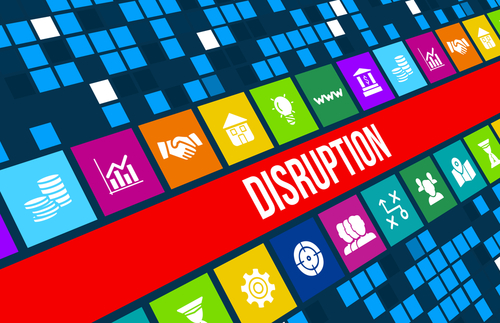
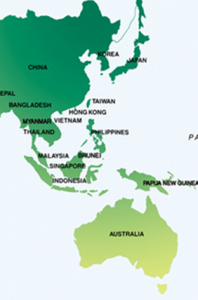 Platform as a service (cloud)
Platform as a service (cloud)


